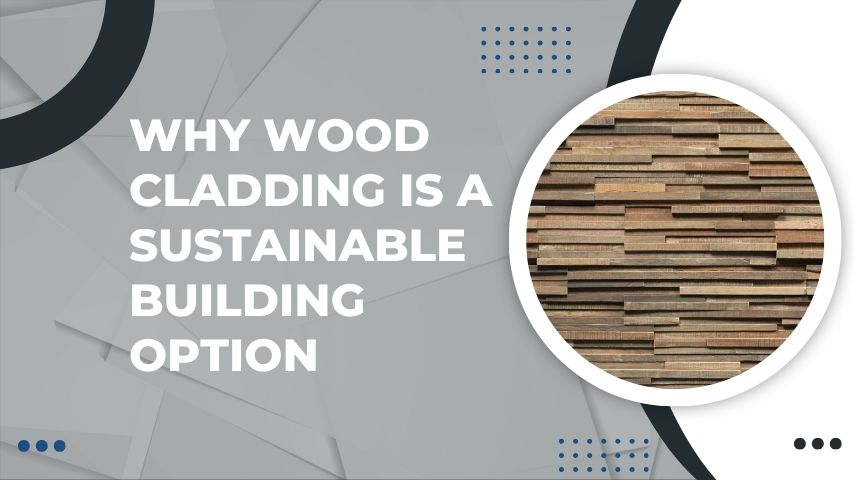Wood cladding has become a popular choice for building exteriors and interiors due to its natural beauty, durability, and versatility. However, one of the most significant advantages of wood cladding is its sustainability. In a world where environmental concerns are becoming increasingly important, choosing sustainable building materials is crucial. Wood cladding stands out as an eco-friendly option that offers numerous benefits for both the environment and building occupants. This blog will explore why wood cladding is a sustainable building option, its environmental benefits, and how it contributes to a greener future.
The Environmental Benefits of Wood Cladding
Wood cladding is a renewable resource, which is one of its most significant environmental benefits. Unlike non-renewable materials such as metal or plastic, wood can be sustainably harvested from forests managed for continuous production. When sourced responsibly, wood cladding contributes to the preservation of forests and biodiversity. Sustainable forestry practices ensure that trees are replanted and forests are maintained for future generations. This cycle of growth, harvest, and replanting makes wood cladding a truly renewable resource.
In addition to being renewable, wood cladding has a lower carbon footprint compared to other building materials. The production of wood products requires less energy and generates fewer greenhouse gas emissions than the production of concrete, steel, or plastic. Trees absorb carbon dioxide from the atmosphere as they grow, and this carbon is stored in the wood throughout its life cycle. When used in building construction, wood continues to store carbon, helping to mitigate climate change. Choosing wood cladding over more energy-intensive materials can significantly reduce a building’s overall carbon footprint.
Wood cladding also promotes energy efficiency in buildings. Wood is a natural insulator, providing excellent thermal performance. It helps regulate indoor temperatures by keeping buildings warm in the winter and cool in the summer. This reduces the need for artificial heating and cooling, leading to lower energy consumption and greenhouse gas emissions. By improving energy efficiency, wood cladding contributes to the sustainability of buildings and helps reduce their environmental impact.
Note – Looking to enhance the beauty and sustainability of your home or office? StylishDecor offers top-quality Wood cladding work in Abu Dhabi that combines elegance and eco-friendliness. Our expert team is dedicated to bringing your vision to life with durable and stylish wood cladding solutions. Contact StylishDecor today for a free consultation and discover how we can transform your space with our professional wood cladding services!
The Aesthetic Appeal of Wood Cladding
Wood cladding is not only environmentally friendly but also enhances the visual appeal of buildings. Its natural beauty and warmth create a welcoming and aesthetically pleasing environment. Wood cladding comes in various types, colors, and textures, allowing architects and designers to choose the perfect option to complement any style. Whether it’s a modern, rustic, or traditional design, wood cladding adds a unique charm and character to any building.
The versatility of wood cladding extends beyond its appearance. It can be used for both exterior and interior applications, making it a versatile choice for various building projects. Exterior wood cladding provides a durable and weather-resistant finish that protects buildings from the elements. Interior wood cladding adds warmth and texture to walls and ceilings, creating a cozy and inviting atmosphere.
The Durability and Longevity of Wood Cladding

Wood cladding is known for its durability and longevity, making it a practical and sustainable building option. When properly installed and maintained, wood cladding can last for decades, providing long-term protection and aesthetic appeal. Modern wood treatments and finishes enhance its resistance to moisture, insects, and decay, ensuring that it remains in excellent condition over time.
One of the key factors contributing to the durability of wood cladding is the choice of wood species. Certain wood species, such as cedar, redwood, and teak, are naturally resistant to decay and insect damage. These species have a high content of natural oils and resins that provide protection against the elements. When used for wood cladding, these durable wood species require minimal maintenance and offer exceptional longevity.
Regular maintenance is essential to preserve the beauty and durability of wood cladding. This includes cleaning, sealing, and reapplying finishes as needed. Proper maintenance protects the wood from moisture, UV rays, and other environmental factors that can cause damage. By investing in regular maintenance, building owners can extend the life of their wood cladding and ensure its continued performance.
The Contribution of Wood Cladding to Green Building Practices
Wood cladding plays a significant role in green building practices and sustainable construction. Green building aims to reduce the environmental impact of buildings and promote resource efficiency. By incorporating wood cladding into building projects, architects and builders can achieve various green building certifications and standards.
One of the primary certifications for green building is the Leadership in Energy and Environmental Design (LEED) certification. LEED-certified buildings meet stringent criteria for sustainability, energy efficiency, and environmental performance. Wood cladding contributes to LEED points in several categories, including sustainable materials, energy efficiency, and indoor environmental quality. Using wood cladding can help buildings achieve higher LEED certification levels and demonstrate a commitment to sustainability.
Another important certification is the Forest Stewardship Council (FSC) certification. FSC-certified wood products come from responsibly managed forests that meet high environmental and social standards. Choosing FSC-certified wood cladding ensures that the wood is sourced from sustainable and ethical forestry practices. This certification provides assurance to building owners and occupants that the wood used in their buildings supports sustainable forest management.
Conclusion
Wood cladding is a sustainable building option that offers numerous environmental, aesthetic, and practical benefits. Its renewable nature, low carbon footprint, and energy efficiency make it an eco-friendly choice for building construction. The natural beauty, durability, and versatility of wood cladding enhance the visual appeal and longevity of buildings. By choosing wood cladding, architects and builders can contribute to green building practices and create healthier, more sustainable environments.
For more insightful articles related to this topic, feel free to visit technewsideas.com


